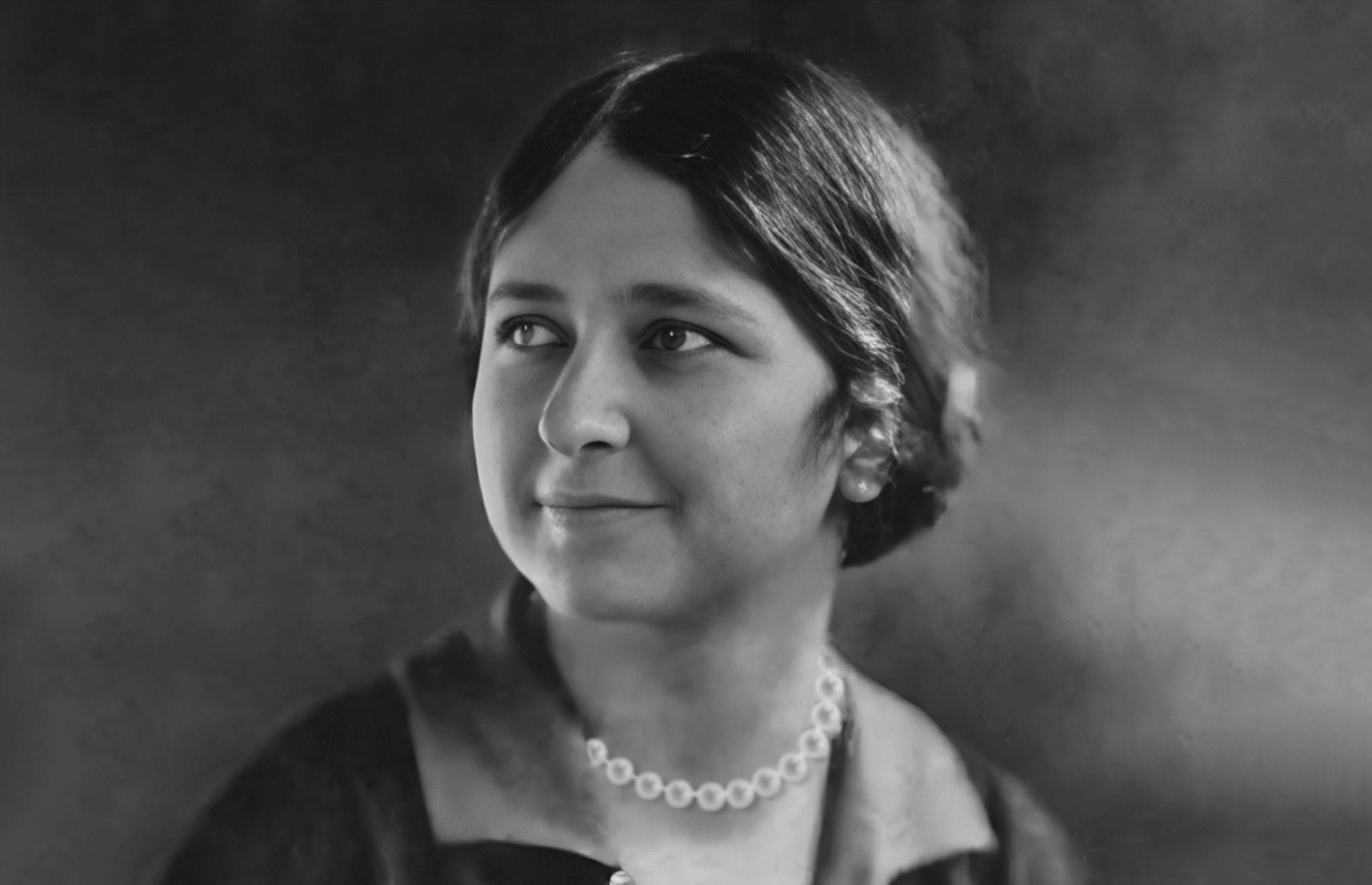Alma Ledig ED26 WG31 raised her épée. She had just squeaked into the finals of the 1928 Pennsylvania state fencing championships. At the referee’s signal, Ledig and her opponent faced off. The tips of their swords held a dark pigment; whoever marked the other’s jacket would carry the title.
That Ledig’s three-sentence, 1989 obituary fails to mention her status as Wharton’s first female graduate, nevermind her fencing prowess, speaks volumes about the degree to which Ledig was ahead of her time. She blazed a trail for women at Wharton, nearly 90 years before Erika James became the first woman to lead the School as dean.
Ledig’s post-graduation accomplishments include directing a program for students in Philadelphia public schools to receive on-the-job training; publishing a mystery novel reviewed by the New York Times; and rising to the rank of commander in the U.S. Naval Reserve, where she served in the Bureau of Ships, managing personnel during World War II.
In many ways, Ledig’s successes prefigure the Wharton of today, with women comprising over half of this year’s graduating class. Angela Ziccardi WG23, one of the first female officers to serve on a nuclear submarine, sees Ledig as a pioneer. “It makes me feel so proud to learn that the first female Wharton graduate served in the Navy,” Ziccardi says. “It all started with her.” Ziccardi sits on the board of the Wharton Veteran’s Club, which benefits from Ledig’s legacy in more ways than one — over fifty years after graduation, Ledig still donated to The Wharton Fund, to support programming for students.
At Wharton, Ledig employed a cloak-and-dagger approach to research. Posing as a customer, she visited half a dozen department stores, scripting her side of each visit to isolate the behavior of the salespeople. She always asked for the same item — a black dress — using the same language, and scrupulously noted how each store attempted to close the sale. She also worked undercover for a day at Gimbels, at the time the world’s largest department store chain by revenue, and found that lookism polluted the hiring process: “The choice is often based on predilections of a pretty face or a comely figure,” she wrote.
In her 138-page thesis, Ledig recommended the creation of a new curriculum for Gimbels’ ready-to-wear employees. “Physical good looks do not seem to have a positive correlation” with sales, Ledig wrote, after analyzing various traits of the store’s top salespeople. “Mere prettiness of face and figure does not make as good a salesperson as intelligence.”
Her analysis also indicated that diverse hiring practices brought economic benefits. “The ideal situation,” Ledig wrote, “would be to have as many different types and ages of salespeople as we have types and ages of customers.” The typical customer would be best served by a salesperson “sympathetic to her desires and interests.”
In many ways, Ledig’s conclusions anticipate the world of retail today. “A good salesperson,” she concluded, “treats each customer as an individual.” It wasn’t enough to have a canned set of phrases, or to repeat the same pitch to different customers. “The exact selling points you use,” she advised, “will depend on your customer.”
Ledig put her thesis into practice a decade later, in the early 1940s, running a program for seniors at Olney High School, in which young women spent half the day in class and the other half working in retail, everywhere from grocery stores to haberdashers. In 1942, Congress authorized the Navy to allow women to enlist in the Naval Reserve, which Ledig joined while continuing to work for the Philadelphia School Board. In 1944, she was assigned to the Bureau of Ships in Washington, D.C., a move significant enough that it was covered by the Philadelphia Inquirer. “Miss Ledig,” the paper noted, “has the distinction of being the first woman to graduate from the Wharton School.”
Later that year, Ledig found the time to publish a novel with her sister Ernestine. Cobwebs and Clues, set in the fictional, oceanside town of Bluewater (perhaps inspired by Ocean City, New Jersey, where their father retired and their uncle once owned a hotel), features plenty of pulpy tropes — a handsome doctor, an unexpected murder, a taut romance — but also inversions of traditional gender roles, including a male secretary.
By April 1945, Ledig had risen to the rank of commander — a promotion of two ranks in roughly a year. At this point, she more or less vanishes from the historical record, but her legacy lives on. Through her work with public schools and the Navy, Ledig embodied the idea that business education is for everybody, and the impact that Wharton graduates have on the world is a lasting one.


























